More than P500M counterfeit and smuggled goods seized at Manila
The Criminal Investigation and Detection Group (CIDG) seized more than Php 500 million worth of counterfeit and smuggled goods in different areas of Manila in a two-day operation (October 2 and 3, 2014), the CIDG Director said. Police Director Benjamin B. Magalong stated that the operations conducted by the detectives of the Anti-Fraud and Commercial Crimes Unit (AFCCU-CIDG), headed by PSSUPT Bartolome Bustamante, along with the representatives of the Intellectual Property Office of the Philippines (IPO PHL) , Bureau of Customs (BOC) and National Bureau of Investigation (NBI), were covered by a Warrant of Seizure and Detention issued by General Mendoza of the Bureau of Customs wherein the said governmental agency has the authority to seize and forfeit products as vested by the Tariff and Customs Code.
Lear More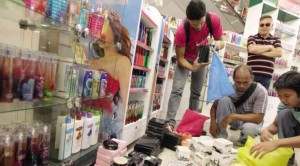
P500M worth of smuggled goods seized in Tondo raid
MANILA, Philippines—Police seized about P500 million worth of smuggled goods in a raid in Tondo, Manila on Friday, the Philippine National Police (PNP) said. Chief Inspector Elizabeth Jasmin said operatives from the Criminal Investigation and Detection Group seized the smuggled goods during the raid on seven warehouses along Rivera Street in Tondo. The confiscated goods consist of Sony batteries, children’s products, perfumes, and other items, Jasmin said. She said the CIDG would coordinate with the product’s brand owner, saying the seized goods were suspected of being counterfeit.
http://newsinfo.inquirer.net/642449/p500m-worth-of-smuggled-goods-seized-in-tondo-raid#ixzz3FjylsKXm
Lear More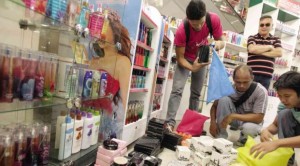
P500M worth of smuggled goods seized in Tondo raid
MANILA, Philippines—Police seized about P500 million worth of smuggled goods in a raid in Tondo, Manila on Friday, the Philippine National Police (PNP) said. Chief Inspector Elizabeth Jasmin said operatives from the Criminal Investigation and Detection Group seized the smuggled goods during the raid on seven warehouses along Rivera Street in Tondo.
http://newsinfo.inquirer.net/642449/p500m-worth-of-smuggled-goods-seized-in-tondo-raid#ixzz3HiPBb9z3
Lear MoreHandbags, Legos among more than $500K in fake goods seized at Houston-Galveston seaport
Expensive handbags and children’s toys were among the hundreds of phony items from a shipment seized by U.S. Customs and Border Protection officers working at the Houston-Galveston seaport. The more than 200 counterfeit handbags and nearly 50 packages of plastic building blocks had an estimated retail price of more than $500,000. The items were seized on Sept. 29.
“Intercepting counterfeit goods protects the trademark holder, the unsuspecting consumer, and strengthens the U.S. economy,” said Houston CBP Area Port Director Dave Fluty. “Import safety and protecting intellectual property rights are priority trade issues. We will take every opportunity to intercept counterfeit goods entering through this port.”
http://world.einnews.com/article/227286457/iOeW-OiP4joRWxQG
Lear More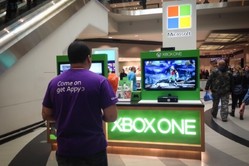
Hackers plead guilty in fake Xbox One scam
Five people have been charged with stealing code for Microsoft’s recently-introduced Xbox One console, as well as some of the unit’s flagship games, with the aim of making counterfeit versions of the device. The five men are reported to be members of an international hacking ring and are also accused of stealing software used to train Apache helicopter pilots that was being developed by Zombie Studios, according to the US Department of Justice (DoJ).
Lear More
Canada’s combating counterfeit products legislation nears passage
On October 2, 2014, Bill C-8, the Combating Counterfeit Products Act, passed the House of Commons, and proceeded to a first reading in the Senate. Originally introduced in March 2013 as Bill C-56, and re-introduced during the current session on October 28, 2013, the Combating Counterfeit Products Act is intended to give trademark and copyright owners additional options for dealing with the importation and sale of counterfeit goods. In announcing the passage of the Bill to the Senate, Minister Moore commented the Act will “give our border guards the tools they need to work with Canadian rights holders to stop illegal counterfeit goods from entering the country”.
http://www.lexology.com/library/detail.aspx?g=90131632-1582-43b8-b7d1-f871d7b0c8aa
Lear MoreCigarette Smuggling and Cyber Security: Low-Tech Crimes Fund High-Tech Threats
You may not connect the cheap cigarettes sold under the counter (or out of a trunk, bodega or by a street vendor) with the mysterious charges on your credit card that you don’t remember making or the cash that has, somehow, just disappeared from your bank account. You also may not connect that website selling cheap cigarettes made in second and third world countries with Shellshock or whatever the fashionably scary cyber-threat of the day is when you’re reading this. But the Russian mafia and other Transnational Criminal Organizations and Foreign Terrorist Organizations understand the connections quite well. Criminals around the world know that tobacco trafficking is a lucrative, low risk way of raising cash that can be used to fund narcotics deals, arms smuggling, human trafficking and, more recently, the theft of credit card and banking data.
Lear More
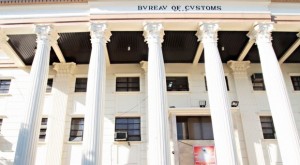
Customs files smuggling raps vs Batangas rice importer
MANILA, Philippines—The Bureau of Customs (BOC) filed on Thursday smuggling charges against a Batangas-based trader who allegedly imported illegally from Vietnam more than 12.8 million kilograms of rice worth P513 million in 2013. The respondents to the cases filed by the BOC before the Department of Justice were Bold Bidder Marketing and General Merchandise representative Ivy M. Souza, as well as the company’s customs brokers Denise Kathryn V. Rosaroso, Elbert V. Lusterio, Francis Rudolfh V. Forneste and John Kevin Cisneros.
Lear More
Renewed clampdown against rice smuggling
AS part of measures to successfully tackle rice smuggling, the Nigeria Customs Service (NCS) has acquired Armoured Personnel Carriers (APC) and fine-tuned its security strategy. Under the new approach, the NCS is to place more emphasis on intelligence gathering, security of its personnel and “take the battle to the door steps of smugglers”.
Lear More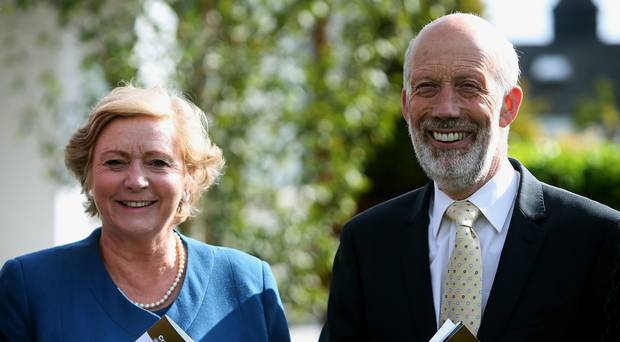
Cross border co-operation hailed
Stormont’s Justice Minister David Ford and Dublin’s Minister for Justice and Equality Frances Fitzgerald joined PSNI Chief Constable George Hamilton and interim Garda Commissioner Noirin O’Sullivan at a conference in Belfast that highlighted the co-operation between law enforcement agencies in both jurisdictions. The annual cross border organised crime seminar was held a week after Irish and British authorities worked together to intercept a yacht trafficking around a tonne of cocaine off the Cork coast.
Lear More



